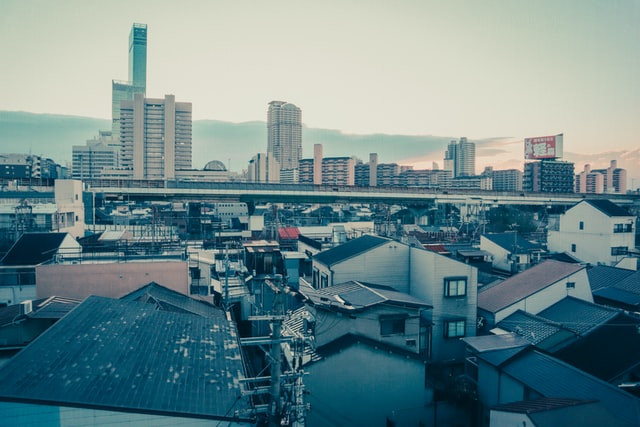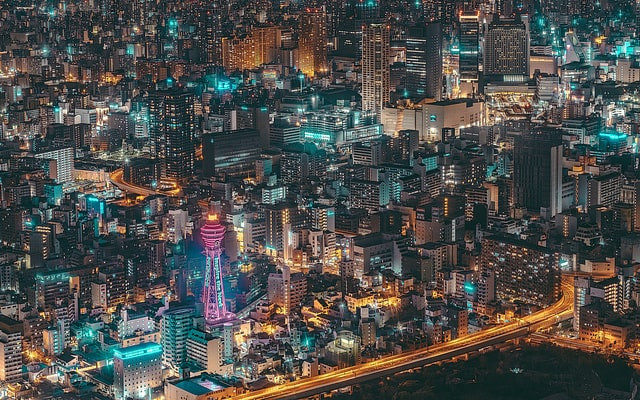Osaka is a major city in the island nation of culture. A place for business and tourism, the city continuously attracts people from different places within the country as well as from overseas, translating to a diverse population mix. Osaka’s demographic growth promises a more vibrant development in the future.
Table of Contents
- Osaka: Brief Introduction of its history
- Understanding the population demographics of Osaka
- Trajectories of demographics in Osaka for the future
- Summary
Osaka: Brief Introduction of its history
Osaka has a long history spanning over 10,000 years since the time the first inhabitants settled on the land. It was around the 6th century that Japan was united under the Yamato clan, which traced its origin to the sun goddess Amaterasu. Buddhism and Chinese influence became defining features of culture and governance that became the foundation of the Japanese people and nation. Osaka, which lies in the middle of the largest island, played its role as the heartland of Japan that helped to establish the beliefs, practices, and customs that became the roots of modern Japanese culture, politics, and economics.
During the seventh century, Miyakonojo established Osaka as the first capital city of Japan according to the patterns of the Chinese concepts of a city structure. The capital was later on transferred to nearby Nara and Kyoto, but Osaka remained a major center and gateway for commercial activities and cultural development as the city remained a progressive modern community.
By the latter part of the 12th century, Osaka came under the control of the samurai clans who led warriors’ lives according to their Bushido code, thus, ushering in a militaristic culture that is uniquely Japanese. Other areas in the Kansai area remained free from the control of the samurai, such as Sakai. Furthermore, around the end of the 16th century, Hideyoshi Toyotomi succeeded in unifying the country by making Osaka his seat of governance, the center of military power, and the hub of Japanese economic and political administration and implementation. Osaka remained as the busy focal point of commerce and economic progress in the 17th century, even when the political center shifted eventually to Edo, later renamed Tokyo.
Teki Juku and the modern Osaka

Japanese civilization essentially flowered as a result of Osaka’s well-informed population, which was educated in western ideas at the Tekijuku school established by a doctor named Ogata Koan, who studied under Dutch residents in Japan during the late Edo Period when Japan closed its doors to most nations except for the Netherlands. The school became instrumental in developing the excellent and independent entrepreneurial spirit of the Japanese people, which led to the country’s success in gaining immense progress as a highly-modern and progressive nation that is respected all over the world. Many of Japan’s notable historical figures, such as Yukichi Fukuzawa and Masujiro Omura, obtained education at the old Tekijuku merchant building, which is now a museum for local and foreign tourists.
After World War II, Osaka underwent reconstruction after sustaining great damage due to air raids and served as a center of trade distribution and commercial progress for the whole of Japan. Osaka’s proximity to Tokyo and the ongoing changes during that historic period led to its own march to economic and social progress.
Today, Osaka is the center of the financial administration of Japan. It is now a highly-urbanized city with a demographics that is as metropolitan yet remaining essentially Japanese in substance but which is at par with other urban centers of the world.
※ Osaka Prefectural Government, "History of Osaka"
Writer's Pick
Understanding the population demographics of Osaka
As of 2019, Osaka had a population of almost 2.8 million in a total area of 225.21 square kilometers, giving us a population density of about 12,000 people per square kilometer. This would actually appear quite dense as one hectare can house as many as 100 or more medium houses, which means there are two residents in each of those virtual houses. Accounting for roads, open spaces and waterways, we can imagine smaller and fewer homes but more people dwelling in each one.
And Osaka is only second in terms of population density, next to Tokyo. Its population actually comprises 7% of the entire Japanese population. Osaka ranks 5th on the foreign resident’s ratio by prefecture where non-Japanese residing in Japan can be found and make up around 22% of Osaka’s Ikuno Ward and 12% of Naniwa Ward. At present, Osaka tops other cities in the number of foreign residents.
※ City of Osaka, "Estimated population (as of the 1st of every month) and population changes" ※ Osaka Info - Osaka Convention & Tourism Bureau, "Osaka for Beginners" ※ Mizuho Research Institute Ltd., "Japan’s foreign population hitting a record high," p.3 and 4

This city has indeed attracted not only many foreign visitors but also local and overseas day laborers, making it a growing, crowded cosmopolitan. Such demographics have caused some friction among residents, as well as posed as many challenges to Japanese officials.
One specific instance was the city’s attempt to eliminate illegal establishments that allowed unregistered overnight accommodations to foreigners. Overnight lodging in private residences, called minpaku, have now been allowed under regulation by the government to those that register and undergo the proper procedures for having guests.
The presence of these two most represented minority groups in Japan, Chinese and Korean residents, has resulted in the proliferation of commercial establishments, such as restaurants, souvenir shops, bakeries, fortune-telling kiosks, and others. There is reportedly a plan to set up a Chinatown in Nishinari, Osaka. If the plan prospers, Osaka will be the next host to Chinatown, after Yokohama, Kobe, and Nagasaki. While economic vitality is a welcome development, the potential trade-offs, such as cultural misunderstandings and the perceived loss of Japanese businesses in the area in the process, is a source of concern for residents. This is just one manifestation of the growth of the foreign population in the city.
Trajectories of demographics in Osaka for the future
Osaka's population is heavily-weighted in favor of residents aged 25-54 years old, making up over 37%, while 65 years old residents and older comprise over 29%. It has a negative population rate of growth (-0.27%, as of a 2020 estimate), meaning its biological growth rate is not sufficient to sustain a population that will prop up or even boost the city's potential growth into the future. The birth rate was at 7.3 births for every 1,000 persons in 2020, while the death rate was 10.2 deaths. This is supplemented by the known fact that Japan, as a nation, had launched a labor reform program of hiring foreign workers to address the manpower deficit. As a direct result, many foreigners prefer to reside and work in Osaka because of the availability of jobs offered in that dense, burgeoning urban area, as well as in other major cities.
※ Central Intelligence Agency, "East Asia/Southeast Asia: Japan"
Moreover, with a sizable non-working, aged population that will have to depend on government and private pension programs, the primary problem of sustaining those needs has naturally brought about the present demographics, as well as the current social, cultural, economic and political issues that now prevail. While things may appear to stand at a situation that can deliver ample benefits to both Japanese and non-Japanese residents, and the country, in general, the need to seek a balance that will create a more sustainable and equitable future for Osaka is still ongoing.
Summary

Osaka was the center of commerce, culture, and governance, as well as of military strength, until it passed on many of those roles to other urban centers in Japan. The city directed its focus on cuisines until it is currently known as the "Nation's Kitchen", displaying its importance to modern Japan.. Certainly, it shares many of the challenges mentioned above with those cities as well, to a less or greater degree. Nevertheless, its rich history, culture, and proven resilience through turbulent periods in the distant and recent past have shown that the people and their ways of life and overcoming trials assure the whole world that nothing can faze the Japanese spirit of gambare (doing your best and not giving up).



































